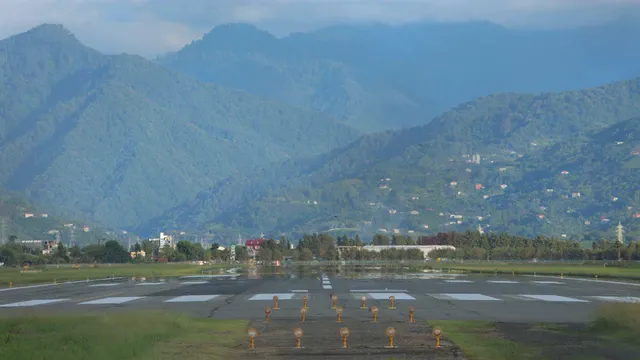
Why Did Highland Scots Come to Georgia?
Introduction
The arrival of Highland Scots in Georgia marked a pivotal moment in colonial history. In 1735, these brave settlers landed, establishing a community that would significantly shape the region. Their migration was driven by various factors, which we will explore in detail.
Summary and Overview
Highland Scots migrated to Georgia primarily due to socio-political unrest in 18th-century Scotland. Clans faced turmoil, and many sought a fresh start. The promise of land and opportunity in the New World lured them away from their native glens.
James Oglethorpe, the colony’s founder, recognized their potential. He recruited Highland Scots, seeing them as skilled farmers and soldiers. They settled in Darien along the Altamaha River, creating a bastion against Spanish threats. Their military prowess proved invaluable during conflicts, including the War of Jenkins’ Ear.
The Highland Scots’ settlement helped secure Georgia’s southern frontier, making them integral to the colony’s early development. Their legacy continues to influence Georgia’s cultural landscape today. Learn more about the impact of Highland Scots on Georgia’s development.
If you’re intrigued by the Highland culture, why not dive deeper with Clanlands: Whisky, Warfare, and a Scottish Adventure Like No Other? It’s a delightful read that captures the spirit of Scotland and its rich heritage.

The Highland Scots played a crucial role in shaping Georgia’s cultural landscape and development. Explore the connections between their legacy and modern Georgia.
Historical Context of Highland Scots
Political and Social Climate in Scotland
The 17th and 18th centuries were turbulent for Scotland. Political unrest and clan rivalries created a climate of instability. The aftermath of the Jacobite uprisings further complicated life for many Scots. Economic hardship gripped the Highlands, pushing families into poverty.
Many Scots faced dire conditions, struggling to provide for their families. The promise of land and freedom in the Americas was tempting. Key events like the Battle of Culloden in 1746 forced many to flee. After this defeat, many Highlanders sought refuge far from their homeland. This combination of war, poverty, and uncertainty fueled a wave of emigration to places like Georgia.
To truly appreciate this rich history, consider the Scottish History: A Very Short Introduction. It provides a concise yet informative overview of the events that shaped Scotland and its people.

The Role of James Oglethorpe
Recruitment of Highland Scots
James Oglethorpe had a bold vision for Georgia. He wanted to create a strong, self-sufficient colony. Recognizing the skills of Highland Scots, he saw them as ideal settlers. Oglethorpe believed their military experience would protect the colony from Spanish threats.
He made significant efforts to recruit these Scots. Many came from the Inverness area, ready for a new life. Oglethorpe’s recruitment was strategic, as he aimed to build a formidable defense. The Highland Scots played a crucial role in his military plans. Their loyalty and strength were essential for Georgia’s survival during conflicts with Spain.

The Journey to Georgia
Voyage and Arrival
The Highland Scots embarked on their journey aboard the Prince of Wales. Setting sail in October 1735, they faced a long voyage across the Atlantic. The journey was fraught with challenges, including cramped conditions and illness.
Upon arrival in Georgia, they settled at New Inverness, now known as Darien. The location along the Altamaha River was strategic for defense. However, the Scots faced severe hardships, including food shortages and unfamiliar terrain. Despite these struggles, their determination to establish a thriving community remained strong.

Settlement in Darien
Challenges Faced by Highland Scots
Establishing Darien was no easy feat for the Highland Scots. The land was swampy and densely forested, making agriculture difficult. Settlers often faced food shortages due to their inexperience with the local environment. The humid climate also brought diseases like malaria, which took a toll on the community.
Conflicts soon arose with Spanish forces, who viewed the Scots as a threat to their territorial claims. Tensions with Native American tribes added to their struggles. The Scots had to negotiate peace while protecting their settlement. Despite these challenges, the Highland Scots showed remarkable adaptability. They learned new farming techniques and adjusted their diets to include local resources. Their resilience laid the groundwork for a thriving community in a hostile environment.
Speaking of adaptability, why not bring a piece of Scotland into your home with a Scottish Tartan Blanket? It’s perfect for cozying up while you read about your Scottish heritage!

Cultural Retention
Despite the challenges, the Highland Scots clung to their cultural identity. Clan leaders played a vital role in maintaining traditions, providing guidance and support. The Gaelic language was spoken widely, ensuring the preservation of their heritage.
Festivals and gatherings allowed the community to celebrate their Scottish roots. Traditional music and storytelling became important aspects of their social life. Even their attire reflected their heritage, with many wearing plaid clothing. This cultural retention helped the Highland Scots create a unique identity in their new home while fostering a sense of belonging and community. Their traditions would influence future generations, linking them to their Scottish heritage.
Military Contributions
Role in Colonial Defense
The Highland Scots brought significant military skills to Georgia’s defense. Trained as soldiers, they were well-prepared for frontier challenges. Their experience made them valuable assets in protecting the colony.
In battles like the Siege of St. Augustine and the Battle of Bloody Marsh, the Scots demonstrated their capabilities. They fought bravely alongside Oglethorpe’s forces, helping to secure crucial victories against Spanish troops. Their involvement was not only about defense; it also established a strong military presence in the region.
The impact of their military contributions was profound. The Highland Scots helped ensure Georgia’s security during a time of conflict. Their efforts solidified the colony’s position as a vital frontier outpost, shaping its future development and stability.

Legacy of Highland Scots in Georgia
The Highland Scots have left an enduring mark on Georgia’s culture and society. Their strong work ethic and resilience helped shape the region’s agricultural practices. They introduced crops like corn and tobacco, significantly contributing to the local economy. Discover the importance of agricultural practices introduced by Highland Scots.
The Highland Scots’ agricultural contributions have had a lasting impact on Georgia’s economy. Learn more about their agricultural significance.
Their military skills also played a crucial role. The Highland Scots defended Georgia’s borders against Spanish incursions, ensuring the colony’s survival. Today, their descendants proudly celebrate this rich heritage. Festivals and events showcase traditional music, food, and customs, keeping the spirit of their ancestors alive.
Modern recognition of the Highland Scots includes historical societies and cultural organizations dedicated to preserving their legacy. Their influence is woven into the fabric of Georgia, evident in place names, family traditions, and community events.

If you want to celebrate that heritage in style, check out this Scottish Kilt. It’s perfect for those who want to showcase their roots at festivals or family gatherings!
Conclusion
The migration of Highland Scots to Georgia was driven by the quest for land and opportunity. Their contributions, from agriculture to military defense, significantly shaped the colony’s early history. Today, their legacy continues to resonate, reminding us of the rich cultural heritage of Scots in the South. Explore more about this fascinating history and celebrate the enduring spirit of the Highland Scots in Georgia.
FAQs
What motivated the Highland Scots to leave Scotland for Georgia?
Economic hardship, political turmoil, and the promise of land drove their migration.
Who was James Oglethorpe and what was his role in recruiting Highland Scots?
Oglethorpe envisioned a strong colony and actively recruited Highland Scots for their skills.
What challenges did the Highland Scots face upon arriving in Georgia?
They encountered harsh weather, food shortages, and conflicts with Spanish forces.
As you reflect on this rich history, consider adding a touch of Scotland to your kitchen with a Scottish Tea Set. Perfect for enjoying a cozy cup while you ponder the tales of the Highland Scots!
Please let us know what you think about our content by leaving a comment down below!
Thank you for reading till here 🙂
All images from Pexels




